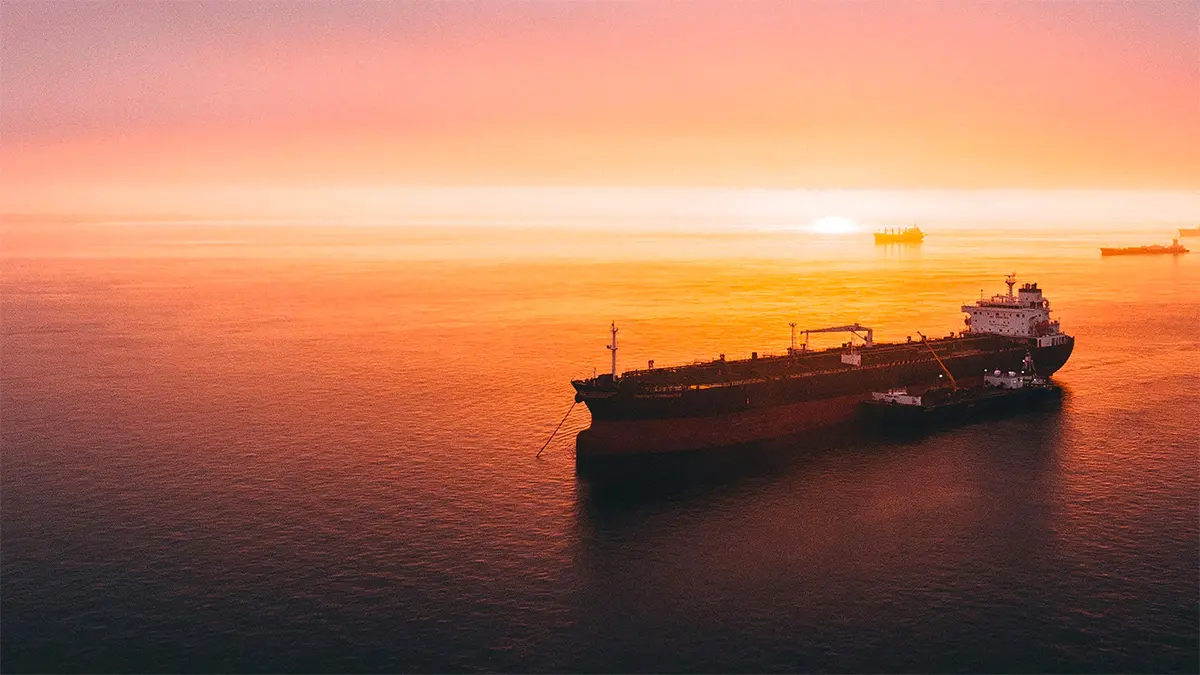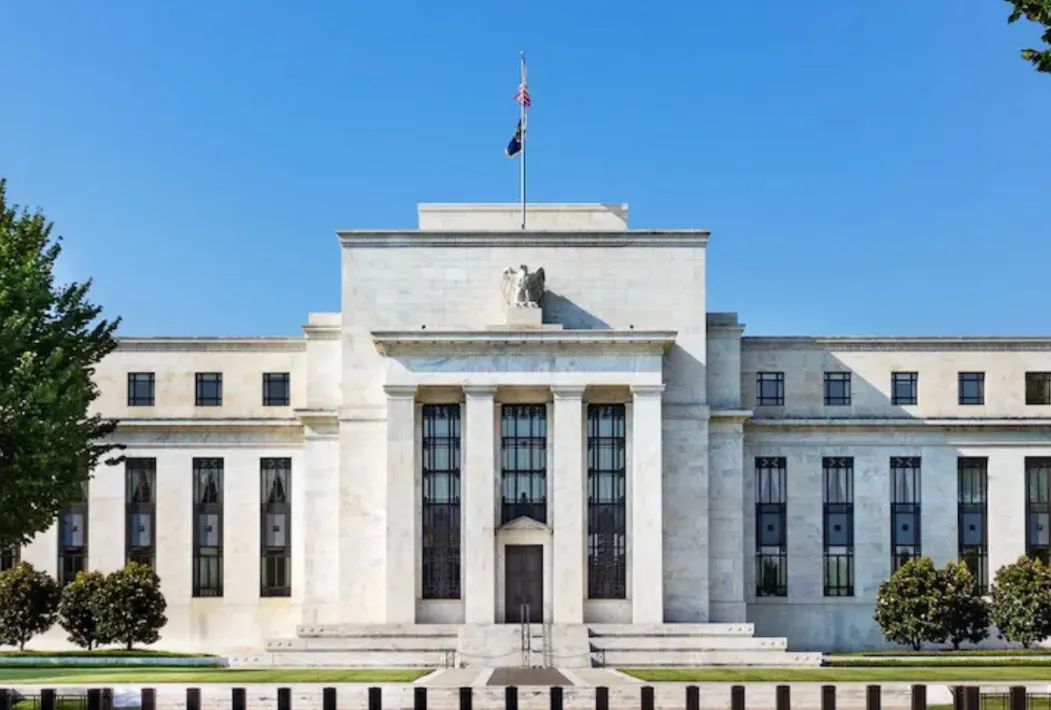M.A.D. 2.0
The Mutually Assured Destruction or M.A.D. doctrine, was fully declared in the early 60’s, primarily by United States Secretary of Defense Robert McNamara under the JFK’s administration. It was during the Cuban Missile Crisis in 1962, where many believed that the two world super powers of that area came the closest ever to direct nuclear confrontation. It would probably take a whole book to explain why the worst possible scenario did not happen at that time, I will not go through that exercise today (there are plenty of good books covering this historical event, one of them that I would strongly recommend is “Gambling with Armageddon” written by Martin J. Sherwin). I just want to highlight that nuclear war was avoided, principally because of the willingness of both leaders (clashing on both side with their most senior military advisors) to de-escalate tension through back channel communication and compromises. The quality of the two leaders of that area were of such importance, which unfortunately does not seem to be the case nowadays. Finally luck was also, fortunately, on the side of peace during these 13 dark days back in October 1962. But can the world afford to rely on luck to avoid similar events in the future ? The answer is probably no. Is it unthinkable to imagine that we might go through this type of crisis in the near future, my answer to this question would also be no. Who could have imagine that we would be witnessing another war in eastern Europe nowadays ? How many geopolitical analysts believe that a confrontation between China and Taiwan in the next 5years is almost a given ? Even though a de-escalation of tensions is always possible, it seems that the rhetoric of many countries and governments does not bode well and therefore it is of the upmost importance to understand what is at stake, for all of us. As I will try to demonstrate in this document, the MAD doctrine of the 21st century could be also be applied with weapons very different than nuclear warheads.
I am aware that, usually, any disclaimer is located at the end of any document and not in the introduction, but for a change, I will start with a disclaimer, or perhaps let’s call it an “introclaimer”. I am going to quote quite a few data’s and numbers in this note. Some of these data might be a little outdated and some of them might not be 100% precise and accurate, I apologize in advance for that. But the topics that I will try to cover in this note, in many aspect, are not the most transparent, as many data are highly classified by the different countries and governments that I have look at. Defense, as well as energy supply, is highly strategic for most if not all countries. Rather than the precise data, what, in my view, is the most interesting take out from this note, is the dynamic of the issues that are covered. Not everybody will agree with my conclusions and I would be more than happy if this document could help create some constructive discussions about the very uncertain geopolitical environment that we are living in.
There is a well-known say in my mother tongue “le nerf de la guerre” which could be translated as “the sinews of war”, that money is of paramount importance for whoever is planning any kind of military scenarios, offensive and/or defensive. On a side note, the perception of containment can be interpreted very differently depending from which side you look at it. If we take a close look at the recent development of defense budgets all over the world, the dynamics are quite clear. The US Indo-Pacific command has, in the last few days, requests an additional $3.5bn that the Biden administration did not include in its recent $880bn defense budget, which represent roughly 3.70% of the US GDP, and which budget has been increasing regularly over the last 5years. Just four days after Russia’s invasion began, German Chancellor announced his government would ramp up its defense spending in 2022 alone by €100bn, taking defense spending from 1.5% of GDP to above 2%. It will mark a dramatic moment for Germany, with Berlin becoming the largest overall defense spender in Europe. NATO’s geographic home of Belgium followed suit days later, announcing it would raise its defense budget from the current €4.2 billion (0.9% of GDP) to €6.9 billion (1.55% of GDP) by 2030. But a couple of days later Belgian Prime Minister told member of parliament this was not enough, indicating more may come. Poland’s deputy prime minister said that his country, which shares a border with Ukraine, will increase defense spending from 2% to 3% of GDP. “We will table an amendment, 3% for the defense budget, starting next year. Then we’ll increase it further,”. Italy, which currently spends just 1.40% of its GDP on defense followed suit when parliament voted overwhelmingly to raise defense spending to 2%. Sweden, who recently joined NATO, will also raise defense spending from 1.3% of GDP to 2%, as soon as is practically possible. Former Prime Minister told reporters, during the Cold War Sweden used to spend 4% of its GDP on defense. The two remaining biggest defense spenders in Europe, the UK and France, have yet to specify by how much they will hike their respective defense budgets. Emmanuel Macron has said he will amplify the defense budget. Under Macron, defense spending has already risen by €1.7bn every year since 2017 to reach €41 billion this year. Britain’s ex-chancellor of the Exchequer and now Prime Minister Rishi Sunak already announced in 2020 that defense spending in 2024/25 would be around £47 billion. In Asia, the dynamic is not all different to what we are witnessing in Europe. China unveiled its annual military budget for 2023, which will increase 7.2% to roughly 1.55 trillion yuan ($225 billion) in a draft budget report released recently. The spending increase marks the second year in a row that the annual hike in military spending has exceeded 7%, amid rising geopolitical tensions and a regional arms race. China is second only to the US in absolute term of defense budget but is now firmly holding the top rank when defense budget is expressed in % of GDP. Late last year, Japan unveiled its 2023 defense budget, totaling 6.8 trillion yen ($52 billion). The new budget is 26% higher than the 2022 defense budget and is the largest year-on-year nominal increase in planned military spending since at least 1952. This list of countries and budgets is obviously not exhaustive but the dynamic is clear for all to see, and this situation is currently happening all over the globe. In 2022, worldwide military spending rose by 3.70% YoY to reach a record USD 2.24 trillion.
On top of stated defense budget increases, new geopolitical alliances are emerging recently. Brazilian president Luiz Inacio Lula da Silva has said he want to work with Beijing to “balance world geopolitics” during his three-day visit to China. The Brazilian president also wants to reinvigorate the Brics association, a group of developing nations including India, Russia and South Africa. Some commentators believe that “the BRICS countries are experiencing their geopolitical moment.” Brics countries are trying to position themselves as representatives of the Global South, providing “an alternative model to the G7.” South African Foreign Minister has said worldwide interest in the BRICS group was “huge.” In early March, she told interviewers that she had 12 letters from interested countries on her desk. “Saudi Arabia is one,” she said. “United Arab Emirates, Egypt, Algeria, and Argentina,” as well as Mexico and Nigeria. In 2014, the BRICS nations launched the New Development Bank as an alternative to the World Bank and the International Monetary Fund. In addition, they created a liquidity mechanism called the Contingent Reserve Arrangement to support members struggling with payments. These offers were not only attractive to the BRICS nations themselves, but also to many other developing and emerging economies that had had painful experiences with the IMF’s structural adjustment programs and austerity measures. This is why many countries said they might be interested in joining the BRICS group. The BRICS bank is open to new members. In 2021, Egypt, the United Arab Emirates, Uruguay and Bangladesh took up shares. Since the start of the Russian war in Ukraine, the BRICS countries have only distanced themselves further from the so-called West. Neither India, Brazil, South Africa or China are taking part in sanctions against Russia. This has become increasingly clear with near-historic levels of trade between India and Russia, or in Brazil’s dependence on Russian fertilizer.
There was a very interesting and unexpected development in the Middle-East last Month. When arch-rivals Saudi Arabia and Iran announced they were restoring diplomatic relations, much of the world was stunned, not only because of the breakthrough after years if not decades of mutual animosity, suspected attacks and espionage between the two countries, but because of who brokered the deal: China. Taking up a specific role that the U.S. could not have fulfilled, this was Beijing’s first foray into Middle East mediation, an area that for the past few decades was largely occupied by Washington. As tensions simmer between the world’s two largest economies and U.S. policymakers sound the alarm over competition and security concerns with China, what does Beijing’s ascendance in the region mean for the Middle East, and for U.S. interests? “Many are breathing a sigh of relief with today’s official Iran-Saudi agreement.” From the Saudi perspective, normalization with Iran, a country that’s long been seen by the Saudi monarchy as one of its greatest security threats, removes obstacles in its reform and economic transformation journey, according to Joseph Westphal, a former U.S. ambassador to the kingdom. “I think the leadership there believes that this is a very important moment for Saudi Arabia as it emerges as a real leader in the world on many issues.” “A constant struggle with Iran delays that and impedes the progress that they made.” “Obviously, the United States could not have made this agreement possible because we don’t have a relationship with Iran,” the ambassador added. “I think China was a good partner to do this. I think they’re the right people,” he said, noting that China invests heavily in Saudi Arabia and is its top trading partner. Hopes for de-escalation in areas like Yemen, where Saudi Arabia has carried out a war against Iran-backed Houthi rebels since 2015, are now more realistic than before, analysts say. Risks to shipping and oil supplies in the region may be reduced, and trade and investment between the countries could add to growth. The news signaled the growing influence of China in the Arab region. And not just economically, as it already exports an immense amount of goods to the Middle East and is the largest importer of Saudi oil, but politically. Leaders of Saudi Arabia and the UAE have made concerted efforts to diversify their foreign relations and move away from being overly dependent on the U.S., as successive American administrations treat the Middle East as less of a priority. “I think it demonstrates that U.S.’s influence and credibility in that region has diminished and that there is a new sort of international regional alignment taking place.
Much has been said and written about the most recent military drills that the Chinese army has been practicing in the Taiwan Strait over the last few weeks. It is important to highlight that, while the Chinese navy and fighter jets were demonstrating for all to see what kind of military strategies could take place possibly in a couple of years near Taiwan, at the exact same time and “only” about 1’000km away (it would take Lockheed Martin F22 or F35 fighter jets about 30minutes to cover that distance) took place the biggest ever joined military exercise between the Philippines & the US army. The 18-days exercise between Manila and Washington involved more than 17,000 troops. This joint military drill is happening only a couple of days after the Philippines identified the locations of four new military bases the US will gain access to, as part of an expanded defense agreement. The four bases include three on the main island of Luzon, close to Taiwan, and one in Palawan province in the South China Sea (SCS). The US is stepping up efforts to expand its Indo-Pacific security options in recent months. The new locations, opened up under the 2014 Enhanced Defense Cooperation Arrangement (EDCA), will allow the US to rotate troops to a total of nine bases throughout the Philippines, including on the strategically important Balabac Island close to Chinese installations in the South China Sea. Retired Armed Forces chief Emmanuel Bautista said the drills have evolved in response to threats posed by an increasingly powerful China. “We’re preparing because the threat has become more real now and you can no longer brush it aside. In a long time, we never saw a credible threat of invasion of the Philippine territory, but now it’s possible.” “We need to portray the credibility of the alliance and to demonstrate that we are prepared. If you cannot deter war, prepare for war,” he said. The opening of the drills will coincide with a high-level meeting of top Filipino and American defense officials and diplomats in Washington for the first time in seven years, as the two allies seek to strengthen close collaboration after the previous Duterte administration shifted the country’s foreign policy away from the United States and pursued close ties with China instead. The next major event in regard to the situation of Taiwan is the presidential election which will happen on the 13th of January 2024. Incumbent President Tsai Ing-wen will conclude her second and final term in May and cannot run again. Candidates are set to be announced on December 15 and political parties are expected to proceed with choosing candidates via internal primaries. The outcome of this election could potentially change the timeframe and possible outcome of Taiwan over the short to medium term.
But what would effectively happen if, one day, China decides to pull the trigger and militarily invades Taiwan ? Even though Taiwan has some high tech military capabilities, they would surely need some kind of international support to stand any chance compared to the power of the Chinese military. But what kind of form this assistance would take is currently more a guessing games rather than any concrete evidence. The US doctrine vis-à-vis Taiwan is not as clear cut as their doctrine concerning Japan & South Korea (i.e. Japan & South Korea agreements with the US is very similar to the Article 5 of the North Atlantic Treaty that guarantees collective self-defense if a member is attacked). President Joe Biden last May in Tokyo has said that “he is willing to get involved militarily to defend Taiwan, that’s the commitment we made”, only for White House officials to immediately rectify what the American president just stated (there is, in fact, no formal requirement for the United States to protect Taiwan included in the 1979 Taiwan Relations Act) and that people were misinterpreting the president’s comments. President Biden would hardly be the first US official to make a “gaffe” on Taiwan policy, but his comments have now been repeated enough that many do not buy that it is just a mistake. Does Joe Biden wants to apply strategic ambiguity on purpose, not to dissimilar to the “Mad Man policy” that president Nixon was using in the 70s (i.e. Nixon tried to make the leaders of hostile Communist Bloc nations think that he was irrational and volatile). If the US should decide to defend Taiwan militarily, they might want to include the other QUAD (Quadrilateral Security Dialogue) members (i.e. Australia, India & Japan) for cooperation and some kind of direct involvement. But what would, for example, be Australia posture to this request (i.e China is Australia largest two-way trading partner in goods and services accounting for nearly a third of Australia total trade balance) ? Also to be considered would be the response of NATO. In the NATO 2022 annual report, China was listed as one of its strategic priorities, for the first time allocating a full paragraph of the report to the middle kingdom. It might sound a little ironic that the North Atlantic Treaty Organization is including in its latest report a strategic landscape of the Indo-Pacific region. That said, NATO, since the end of the Cold War, and more recently in the early 2010’s, redefined its role and missions that was enshrined in a new Global Strategic Concept. Therefore it is not inconceivable that NATO members would opt for a similar posture to the one they apply to Russia last year.
The Russian invasion of Ukraine has provoked comprehensive and stringent sanctions by the United States, Europe and other allied countries against Russian banks, companies, and individuals. A noteworthy measure, unprecedented for a large country, is the Western blockade of the foreign reserves of Russia’s central bank, the Bank of Russia (BOR), immobilizing more than half of its international reserves of $630 billion placed in Western financial institutions. In addition, the BOR has been banned from dealing in the US dollar, euro, and pound sterling. These measures against a country’s central Bank have raised the geopolitical and sovereign risk of central bank reserves holdings. They have also prompted discussions about the possibility of similar sanctions being imposed on China in the event of its military invasion of Taiwan. The consequences of such sanctions will be more significant than the measures against Russia. China’s economy is ten times bigger than Russia’s; it has much more weight and is more integrated in the global economy and financial system. As a result, China has more means of retaliation against Western sanctions. The below paragraphs sketch out a possible scenario of Western sanctions on China and its countermeasures to illustrate the scale of possible damages to both sides.
At present, the People’s Bank of China (PBOC) has $3.2 trillion of international reserves of which the exact currency and asset composition is kept a state secret. However, in a 2018 report, China’s State Administration of Foreign Exchanges (SAFE) indicated that the USD share of its assets declined from 79% in 2005 to 58% in 2014, presumably falling further since then. Nevertheless, it is reasonable to assume that most of the PBOC international reserves is in major currencies such as the USD, Euro, Yen, and Pound Sterling, including holdings of $1.1 trillion US Treasury securities, $220 billion of Asset Backed Securities (ABS) and $270 billion of US equities. China is also holding a very substantial share of its reserve in physical gold. Estimation about how much gold China is holding is hugely speculative, the data that I have come across vary between 4’300 tons (equivalent to USD 280Bio) to 20’000 tones (equivalent to USD 1.2 trillion). In addition, Chinese enterprises have made about $145 billion of foreign direct investment (FDI) in the United States and about $83 billion in the European Union. Many of these enterprises are state owned or can be linked to the Chinese government, such as in the case of Huawei, and could be subject to US and EU sanctions.
In response to a freeze of its foreign reserves and, possibly, other private sector external assets, China could move to nationalize much of the stock of FDI in China, worth $1.9 trillion, focusing on investments from the United States, Europe, and other countries sanctioning China. China can also freeze more than $1.2 trillion of Chinese domestic stocks and bonds owned by foreign investors. Moreover, Chinese entities have incurred about $2.7 trillion of external debt mostly in USD and Euro, including a few Chinese sovereign international bonds. China can stop servicing many of those debts, using the same argument as Russia, that it is willing and able to pay, but is prevented from doing so by US government actions. China can even invoke the force majeure clause if such a clause is contained in any of the external debt contracts. The clause allows parties to a contract to suspend performing the contractual obligations due to government actions which are unforeseen at the time of signing the contract. A pause in servicing China’s external debt would inflict substantial losses on Western investors, largely through investment funds and pension funds. As a result, in terms of balance sheet exposures, China has about $3.4 trillion of identifiable international assets at risk of possible sanctions and up to $5.8 trillion of liabilities, or assets in China of international investors and companies largely from Western countries. China therefore has plenty of room to take retaliatory actions. A sanctions and counter sanctions war game suggests that the losses are comparably severe for both sides.
Moreover, such a situation will significantly disrupt economic exchanges, mainly trade between the two sides. Since exports account for 18.5%, or a relatively large share of China’s GDP, with about one-third of that going to the United States and European Union, their disruptions could cause a substantial decline in China’s economic activity. On the other hand, China accounts for 18.6% of US imports and 22.4% of EU imports, especially in manufactured goods and several critical goods, such as pharmaceuticals and chemicals to make pharmaceutical products. Consequently, disruptions in Chinese imports would cause noticeable shortages, rising prices, and discomfort for consumers and some producers in the importing countries. The macroeconomic impact for the United States may be less severe than for China. However, the lower tolerance of American consumers for goods shortages and inflation would mean the social and political fallout of an all-out economic war with China could be more significant in the United States. The economic impact on Europe would also be more substantial as the EU exports more to China at 17.6% of GDP compared to 11.7% for the United States.
In conclusion, in a scenario of Western sanctions coupled with Chinese counter measures, both sides will suffer substantial damages. This could lead to a situation of M.A.D. economics, reinforcing the more catastrophic nuclear MAD. These considerations would set the parameters of the geopolitical rivalry and conflict between China and the West. This will likely intensify in the foreseeable future to encompass all areas of relationship between the two sides, but hopefully will stop short of economic or military wars. The relationship between the US & China is likely to determine humanity’s fate in the 21st century. It will determine whether there will be peace and prosperity, or the opposite. Should it be the latter, future historians (if any such actually exist) will surely marvel at the inability of the human species to protect itself against its own stupidity.
Disclaimer
The documents herein are issued for general information purposes only. Views and opinions contained herein are those of Bordier & Cie. Its contents may not be reproduced or redistributed. The user will be held fully liable for any unauthorised reproduction or circulation of any document herein, which may give rise to legal proceedings. All information contained herein does not constitute any investment recommendation or legal or tax advice and is provided for information purposes only. Please refer to the provisions of the legal information/disclaimer page of this website and note that they are fully applicable to any document herein, including and not limited to provisions concerning the restrictions arising from different national laws and regulations. Consequently, Bordier & Cie does not provide any investment service or advice to “US persons” as defined by the regulations of the US Securities and Exchange Commission, thus the information herein is by no means directed to such persons or entities.
© 2020 Bordier Group and/or its affiliates.




